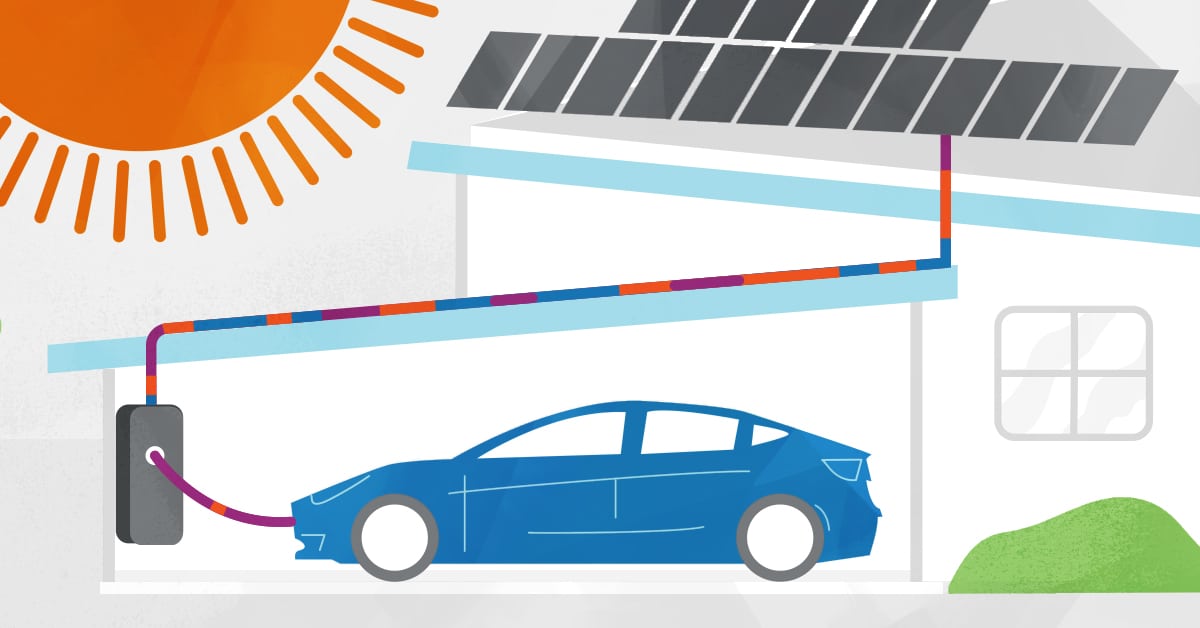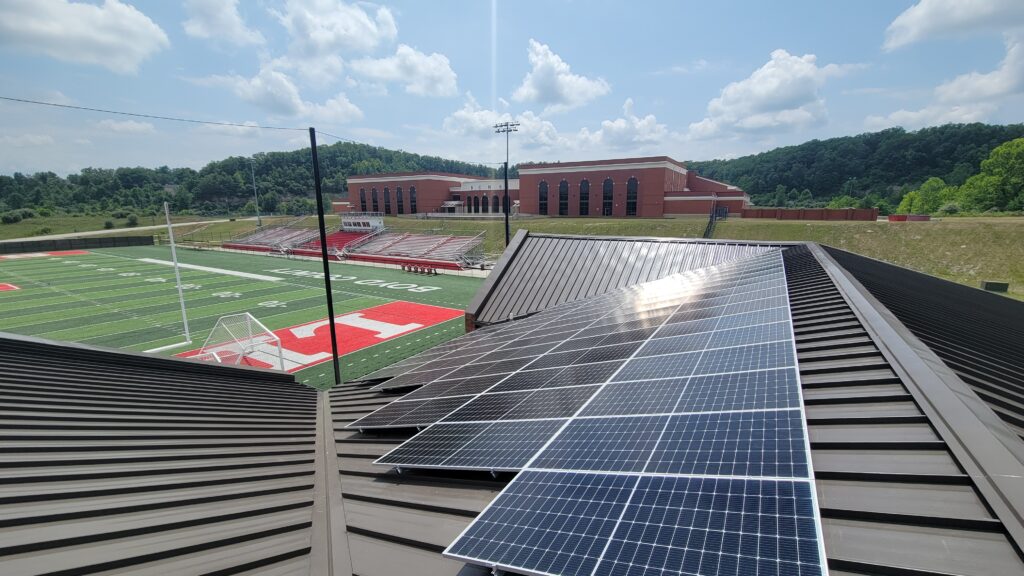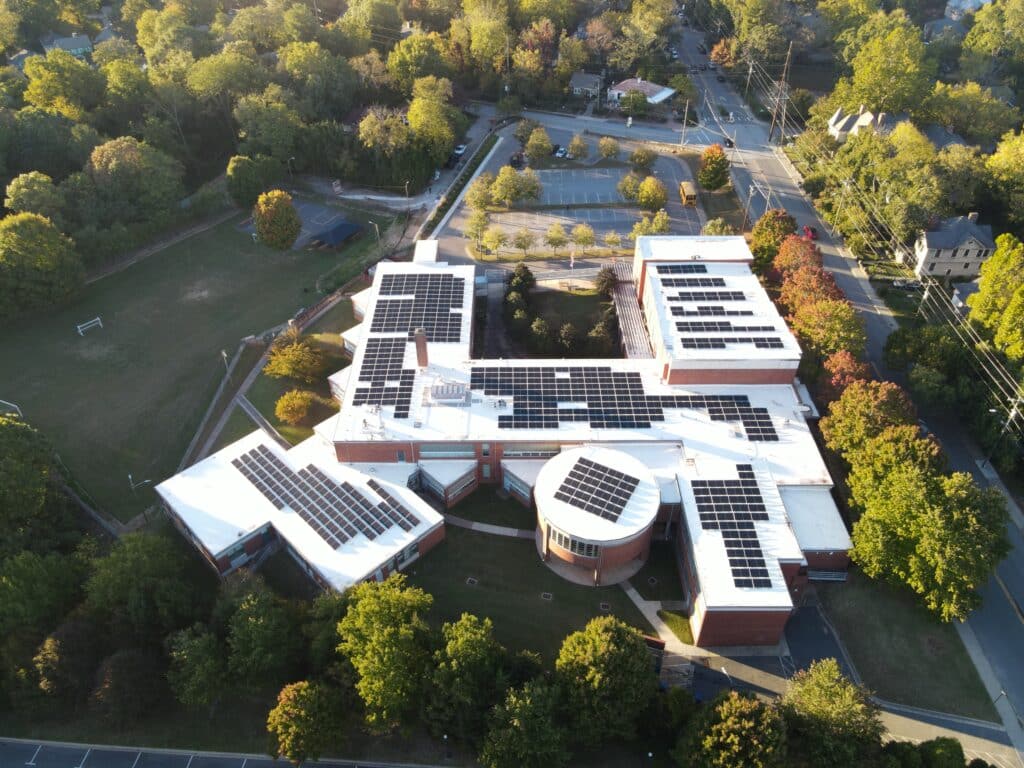This article is from the January 6, 2021, issue of Flip the Script, a weekly newsletter moving you from climate stress to clean energy action. Sign up here to get it in your inbox (and share the link with a friend).
Phew. 2020 was a year, for so many reasons. With attention fixated on the global pandemic and a contentious U.S. election, it was easy to miss news from the clean energy front. Among other headlines, solar power continued its upward surge and electric mobility took big steps toward going mainstream. Against this backdrop, the paradigm-shifting concept of “local energy” is poised to take even bigger steps forward in 2021.
What’s so important about “local energy”? It’s a profound systemic shift, much like “local food” was years ago: you’re still eating a salad, but instead of the lettuce being grown thousands of miles away by ACME Farms, Inc. and traveling on planes, trains, and automobiles to get to you, you picked it up at Rebecca’s farm 15 miles from your house. The economic, environmental, and nutritional impact is largely beneath the surface, but when you stop and think about it—it’s kind of awe-inspiring. After a century of powering our lives with energy from big, centralized fossil-fuel power plants and oil tankers from the Middle East, millions of Americans are now getting electricity from their rooftops and powering their cars at home. We’re bringing power (literally) back to our communities.

Getting energy from your roof: the 2021 update
Residential and community-based solar installations continue to spread across the country, from the sun-soaked roofs of the rural southwest to neighborhoods in New England. With the costs of solar power falling by the day (in 2020, photovoltaic panels were 12 times cheaper on average than in 2010), solar is now the fastest growing energy source in the U.S. Recognizing the benefits of local solar, federal and state regulators are opening markets to affordable, distributed renewable energy, and even utilities are embracing this future.
In many states, feed-in tariffs and net metering policies enable homeowners with solar (and other independent power producers) to feed their extra power back to the grid and get compensated for it. In South Carolina, net metering (the policy that lets you sell the power your solar panels make back to the utility) has helped increase the number of homes with rooftop solar from less than 500 in 2014 to more than 20,000 today. Many states and the federal government also offer rebates and/or tax credits for installing solar, and some have pro-solar mandates. For example, in 2020, California became the first state to require that all new homes be outfitted with rooftop solar panels (or, alternatively, meet the requirements by connecting the homes to offsite solar). Part of the broad end-of-year legislation that Congress recently passed included a two-year extension of the solar tax credit that has helped fuel solar’s growth.
The bottom line? “Local solar” is no longer an isolated trend. Every 90 seconds, another U.S. household goes solar. During the third quarter of 2020, “small” solar (on homes and businesses, or in community solar gardens) accounted for nearly a quarter of the new capacity added to U.S. power grids (throw in big wind and solar farms and you account for 96 percent). Across six southeastern states, the number of homes and businesses with rooftop solar more than doubled since 2018.
Solar installations strengthen our local economies, not only providing “local energy” but creating good jobs and boosting local resilience in the face of volatile energy prices. Over the next decade, “solar installer” will be one of the top 3 fastest growing occupations in America (wind turbine technician is #1).
Electric vehicles step on the accelerator
When electric vehicles enter the mix, things get even more interesting—and impactful. Imagine meeting your household’s power needs with rooftop solar, then also plugging in your car to solar-charge it for your morning commute. You’ve eliminated your reliance on fossil fuels, which means: you’re saving money, reducing your carbon footprint, and supporting your local economy.
While EVs still only account for a small percentage of new vehicle sales in the U.S., 2021 will be the year when the EV market can finally offer a model for most every lifestyle: commuter hatchbacks, luxury sedans, pickup trucks, family-sized SUVs—even MINI coopers. There are plug-in hybrids (which run about 40 miles on electricity and then switch to gas) and all-electrics that can range up to 520 miles (but typically go about 250 miles). Dozens more models are coming soon, as automakers see the writing on the wall: an estimated 100 new EV models are set to debut by the end of 2024. The long list of benefits (fuel cost savings, quieter ride, no tailpipe emissions, lower total ownership costs) are still not widely understood, however: only 30 percent of American drivers report knowing much about EVs—even though 71 percent are considering buying one in the future. Once more consumers become “EV aware” and get access to a variety of models, it’s expected that adoption will accelerate quickly.
A new reality is taking hold, made possible with the arrival of low-cost solar power and electric vehicles to the mass market. Everyday people across the country can transform how they power their lives.
















